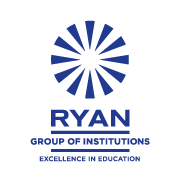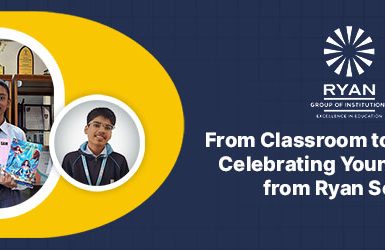As the education industry continues to evolve in the digital age, the focus is shifting from a one-size-fits-all approach to one that recognizes and supports the diverse needs of every learner. Thirty years ago, the world came together at the Salamanca Conference, officially the World conference of Special Needs Education, and made a powerful promise: Every child, regardless of ability, should learn alongside their peers in regular schools—unless there’s a compelling reason not to.
However, the educational sector amongst many others went through a major setback and downfall during the COVID-19 pandemic, resulting in further inaccessibility in the already remote and marginalised areas of the globe, making it more difficult for learning to take a curve for the globe. This period exposed the unpreparedness of systems for inclusive digital learning. The needs of students with disabilities were not being met for a long time, leaving them excluded without sign language interpreters, closed captions and other tools. Everything for the child then onwards is gibberish and incomprehensible words, as communication is the keystone of any learning. The 2023 GEM Report and recent advocacy efforts highlight an action for good shift: inclusion is no longer a distant goal, it’s a growing reality the globe is finally equipped to achieve.
Inclusive education is driven by the forces of technology driven personalized learning, called Assistive Technology (AT)- tools ranging from digital devices to specialized software—that help remove learning barriers for students with disabilities. Whether it’s text-to-speech apps, speech recognition tools, Braille readers, or communication boards, AT is designed to give every child a fair chance to succeed, that starts with awareness of their special need to comprehend and acquire advanced and basic knowledge to be in a position to grasp it.
Benefits and role of AT in fostering inclusive education:
The future of inclusive education is not about fitting students into systems. It’s about reshaping systems to fit every student—with compassion, innovation, and equity at the core.
- Personalized and Flexible Learning: Assistive technology (AT) enables content to be delivered in multiple formats like visual, auditory, and tactile, supporting personalized learning paths that cater to each student’s strengths and needs, developing learners’ independence, agency, and promoting social inclusion.
- Bridging Learning Gaps and Enhancing Access: From low-tech tools like pencil grips to high-tech solutions like screen readers and speech-to-text software, AT helps eliminate barriers and ensures equitable access to education for learners with diverse needs.
- Alignment with Universal Design for Learning (UDL): AT supports UDL principles by offering multiple means of engagement, expression, and representation, making learning more inclusive for all students.
While assistive technology shows great promise in improving academic outcomes and learner empowerment, its effectiveness depends on affordability, accessibility, and teacher training. Continued innovation and systemic support are essential to realizing the full potential of inclusive education globally. Our blog suggests potential measures and techniques that can be inculcated to form the four walls of an inclusive classroom and learning experience, few of them centered on the Indian cultural landscape and needs of students here.
- Peer powered inclusions: Students as fellow ambassadors: Special needs learners can be assisted by the rest of the students as tech buddies, partnered up to learn together promoting inclusivity, empathy, and tech fluency for all the learners. A peer-led tech club can be created within the classroom where students demo and test new assistive tools in pairs or groups.
- Data-Driven Inclusion: Using Learning Analytics to Personalize Support- Today’s digital learning tools can along with just delivering lessons, also simultaneously gather useful feedback about a child’s learning habits and progress. In inclusive classrooms, this data can help teachers better understand how each student is progressing, particularly those with learning difficulties.When used thoughtfully, classroom data can help your child’s teachers understand what works best for them, and adjust accordingly.
-
Culturally Responsive Assistive Technology: In a multilingual country like India, inclusive education must account for more than just access, it must also ensure relevance. Assistive technology (AT) that fails to reflect a child’s language or cultural context can unintentionally create new barriers.Consider a student with visual impairment in rural Odisha. A generic text-to-speech tool in English may have limited impact, while one that reads in Odia makes the content instantly accessible and familiar. Similarly, symbol-based AAC (Augmentative and Alternative Communication) boards customized with local visuals, such as regional foods or festivals, can help children with limited literacy connect with their learning more naturally.Culturally sensitive AT supports not only academic engagement but also a deeper sense of inclusion and identity, ensuring that every child is not just learning, but learning in a way that feels authentic to them.
-
Neurodiversity & Assistive Technology: Empowering Invisible Learners: Not all learning challenges are visible. Many children with neurodiverse conditions—such as autism spectrum disorder (ASD), ADHD, or dyslexia—require support that goes beyond traditional teaching methods.Take, for instance, a student with autism for whom group activities may feel overwhelming, a tablet-based app that provides visual schedules and step-by-step task breakdowns can offer the structure they need to engage meaningfully. For students with ADHD, focus apps and timers that break tasks into manageable segments can boost productivity while reducing stress.
All in all, assistive technology enables educational institutions to unite under one roof despite the spectrum of diversity in learning requirements, further enhancing the foundation of accessible education in India. Schools act as a safe haven for social interactions between students of different backgrounds, further enabling an inclusive environment devoid of biases and exclusions. Institutions can gauge the quality of various methods they employ depending on the comfort and effectiveness of the learning experience, hence creating accessible education keeping in mind the importance of inclusivity.




